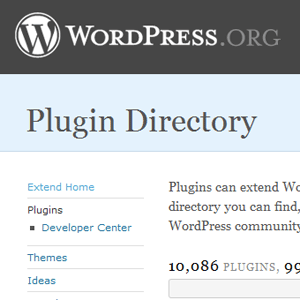On many of my long term projects my clients are heavily involved in the development cycles. We mark everything that’s not in the current cycle as a ‘future feature’ and collect information on it as we work out the items that are currently marked as features.
Often, as we look at a particular piece of functionality, we find that it is covered, at least in part, by a plugin. Unfortunately while the WordPress Plugin eco-system has a lot of good plugins there are also lots that have been abandoned or are of low quality. But how does someone new to WordPress determine the quality of a plugin?
The Short List
When determining the quality of a plugin here are the first three things I look at to see if the plugin deserves a deeper look.
- Current Version Compatibility
When looking for a plugin the first thing to check is that it is listed as compatible with the current version of WordPress (you are running the current version right?). Unless a new version of WordPress has just been released (like in the last week or two) any plugin you are looking at using should list compatibility with the current version of WordPress. It’s a pretty sure sign that it’s been abandoned if you don’t see any updates. It may still work but if the developer couldn’t take the time to tag the version the plugin isn’t really high on their priority list and we don’t want to get involved with plugins that could break and not get updated.
- Forum Posts
If the plugin is listed as compatible with the current version of WordPress the next place to look is the posts in the WordPress.org forums that deal with the plugin. Are people posting about issues with the plugin? If there are lots of people with plugin issues then it might be a good idea to look elsewhere. There is a caveat here though, the more popular a plugin is the more posts you’ll see with issues. Many users will only scan the documentation in the plugin and can often miss easy but critical steps with a plugin. Weigh any issues listed with your own intuition. If the poster sounds like a whiner and is demanding response it’s likely that they don’t really know what they’re doing and the plugin may work entirely fine. On the other hand if there are lots of issues with the plugin and lots of “me too” posts it’s probably a good idea to walk away.
- Developer Response
Coupled with checking the forum for issues is looking at the developer response to issues. Do they respond? If you see no response to forum posts also check the documentation of the plugin. It is possible that the developer has setup their own forum and only responds to issues submitted there. If you’re working fulltime and providing a plugin for free you’re doing everything you can to streamline your workflow and only checking one place for issues is a good way to do that.
So if you’re looking for a plugin check out those things before you commit to it. Sure if you can read code go ahead and read through the plugin looking for WordPress coding standards. A plugin that follows best practice as outlined by WordPress is most likely of higher quality. I’ve found that many plugins fail on one of the three items above pretty quick. If the function of the plugin is a ‘have to have’ then I might use it anyway but I make sure I read through the code and know what we’re getting in to.
